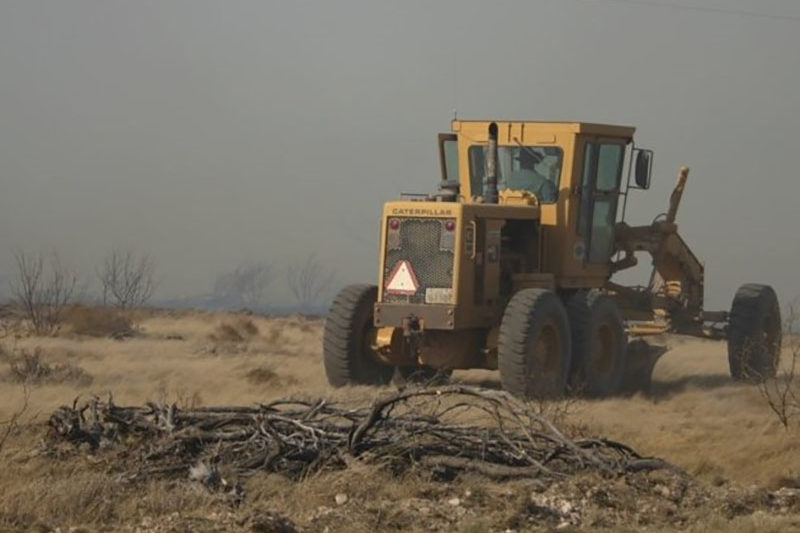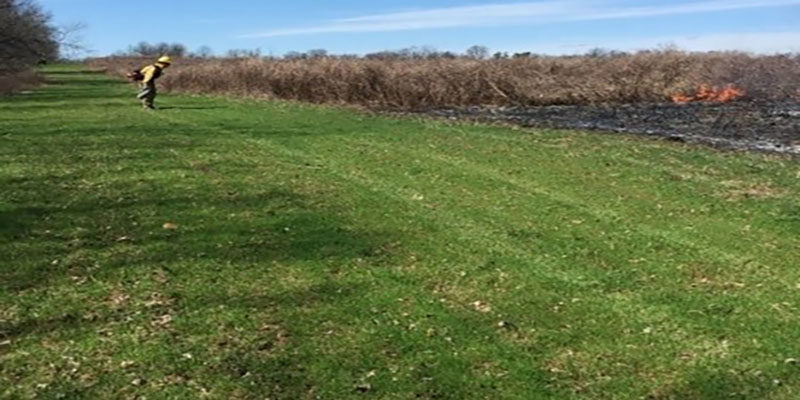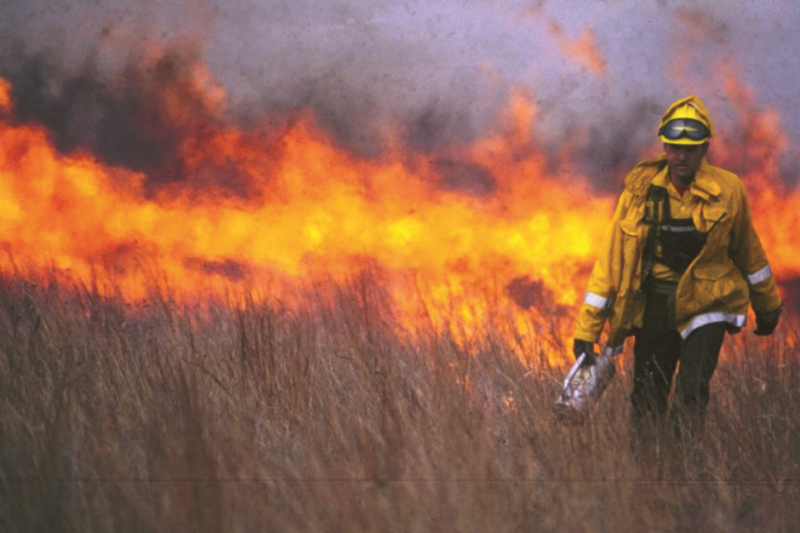Texas A&M Forest Service Takes Proactive Approach to Fighting Wildfires
By Cat DeLaura
Reporting Texas
Nestled in a creek bed with dense brush and at the bottom of a slight valley, the small town of Miami is perilously susceptible to catastrophic wildfires. In 2006, during one of the most destructive wildfires the Texas Panhandle town has seen, fires burned nearly one million acres and left 12 dead in the Miami area.
In March 2019, the Texas A&M Forest Service launched the Texas Wildfire Ranch Program to help towns like Miami. The program focuses on creating fire barriers as a proactive approach to combating wildfires and maps private property to assist firefighters in making tactical decisions that reflect landowners’ priorities.
The program is important because Texas is especially vulnerable to wildfires, said Jim Cooper, assistant fire chief with the Texas A&M Forest Service. “Everywhere in the United States they have what they call fire seasons,” Cooper said. “In Texas, with our fuels and with our (dry and hot) weather, we say we have fire years, because we never can predict when we’re going to have a fire.”
John Nielsen-Gammon, the Texas state climatologist, said the effects of climate change will cause more severe droughts—and therefore more destructive wildfires—in Texas. “In terms of wildfires, the higher temperatures will allow fuels to dry out faster,” Nielsen-Gammon said. “[These] conditions will mean that some days will have greater risk of rapid-fire spread.”
The Texas Wildfire Ranch Program’s primary aim is to create a defensible space around vulnerable areas. The program is currently focusing on two of the most vulnerable towns in the state, Miami and Electra, also in the Panhandle.

Using a bulldozer to form a break in vegetation is one way to stop or slow the spread of wildfires, according to the Texas A&M Forest Service website. Although ranchers often have heavy equipment to do the job, they don’t always know where the breaks should go. Photo courtesy of the Texas A&M Forest Service
To be effective, barriers around cities need to be at least 14 feet wide and unbroken. There are various ways of making barriers: building roads and ditches that create a break in vegetation, performing prescribed burns and planting green winter wheat that doesn’t burn easily, to name a few.

Planting green cover crops that are harder to burn can also serve as a barrier to wildfires, according to the Texas A&M Forest Service. Photos courtesy of the Texas A&M Forest Service
Program staff begin by mapping a border roughly three miles from a city’s limits. They then approach people who own property along that line. Although most ranchers are generally excited about the program, some refuse access.
“That’s happened lots of times,” Cooper said. “We then may go to the rancher to the west of him that’s not three, but four miles outside of town. And as long as we can make a complete line around that zone of protection, then where it’s at doesn’t matter.”
The program depends on coordination between the Texas A&M Forest Service and landowners. While ranchers often have the same heavy equipment provided by the state program, they often lack the expertise and knowledge as to where and how to put in fire barriers. Ranchers are responsible for maintaining the barriers, a much less intensive burden than installing them.

For ranchers that prefer to use prescribed burns to reduce fuel that feeds a fire, the Texas A&M Forest Service recommends the use of a certified prescribed burn manager to oversee this method. Photo courtesy of the Texas A&M Forest Service
Jeremy Fuchs, spokesperson for the Texas and Southwestern Cattle Raisers Association, said it’s an important program for the Panhandle and North Texas. “Wildfires are one of the major environmental challenges for cattle raisers,” Fuchs said, “And it’s one of the things we can work to mitigate.”
Completed plans exist for both Miami and Electra, and the program staff is in the final stages of signing land-use agreements with landowners. The program will begin installing fire barriers in Miami at the start of 2020. A budget between $5,000 and $10,000 has been estimated for each project. They have also begun talking with Christoval about using the program there.
The Texas Wildfire Ranch Program also works with ranchers to identify priority areas, water sources, gates and fences and other sensitive areas on their property. Identifying all these features allows firefighters to consider the landowner’s priorities as they plot fire defenses.
In the past, some ranchers said they didn’t feel the fire service adequately listened to their concerns, Cooper said. The Texas Ranch Wildfire Program has worked to rebuild trust with ranchers, Cooper added.
“It’s huge when we tell a rancher, ‘Hey, guys, if you’ll write down what your needs are and we have that available, who knows, we may be able to use that when we make our tactical strategic decisions,’ ” Cooper said. “And boy, that makes the rancher feel so much better. He doesn’t feel like he’s just being pushed out and there’s a bunch of bulldozers tearing his land up.”
Paul Sublett, chief of the Miami-Roberts Volunteer Fire Department, said he is excited about the program. Sublett has witnessed several devastating fires over the past decade and seen lives and livelihoods destroyed in the flames.
“Hopefully it gives us a fighting chance in the next fire,” Sublett said. “We don’t have much control over fuel growth and weather. This is the only way to even the odds.”